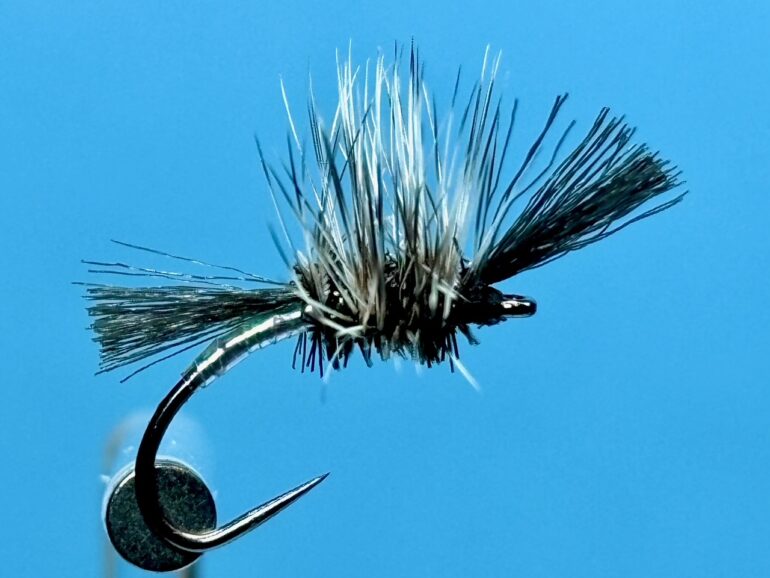
A Fly to Tie & Try May 2025 by Les Lockey
The Hybrid Shiphammer Emerger
Hook: Klinkhammer, size 16, from The Barbless Hook Company, or Fulling Mill Czech nymph, sizes 14 – 16.
Thread: Black Veevus GSP, 50D, or any fine black thread.
Abdomen: Semperfli Mirror tinsel, Mirage, 0.8mm.
Breathers: 1 Strand of black siliconized yarn, from The Fly Tying Boutique.
Hackle: Grizzle cock saddle hackle.
Thorax: Hends no. 46 (Peacock Black) Spectra dubbing, or similar.
TYING
Photo 1. Start the thread a head length back from the eye and wind it down to the rear thorax position and remove the thread tag. Return the thread a little way back towards the hook eye.
Photo 2. Using waxed thread tie in a length of pearl tinsel, stopping the thread just before the hook bend.
Photo 3. Keeping the tinsel tight, wind the tinsel down around the hook bend and back to the tie in point. Secure it with thread and trim off the excess tinsel.
Photo 4. Tie in 1 strand of black siliconized yarn on top of the shank so that equal amounts of yarn lie front and back and bind it down with thread to about a head length back from the eye. Return the thread to the rear of the thorax. Carefully pull both ends of the yarn straight up above the shank and trim them equally ensuring the rear section sits within the bend of the hook.
Photo 5. Tie in a grizzle cock saddle hackle by its stalk, bind down the stalk and remove the excess hackle stalk.
Photo 6. Lightly dub the Spectra dubbing onto the thread and wind on the dubbing noodle to form a slim thorax.
Photo 7. Wind about six or seven turns of hackle over the dubbed thorax, secure with thread behind the breathers and remove the excess hackle. Bring the thread in front of the breathers, form a neat small head, add a drop of varnish to the thread and whip finish through it and remove the thread.
Photo 9. Trim off the hackle fibres below the hook shank to complete the fly.
Tying tips
- As the majority of this fly is tied on the short flat section of the hook, a fine tying thread will help to keep the dressing slim and avoid crowding the eye. Starting the thread a head length back from the eye helps with proportion and again helps to avoid crowding the hook eye.
- For additional security, the tinsel can be wound over some varnish or superglue if required. That said, I use Semperfli mirror tinsel which is much stronger than normal tinsels and so long as the tinsel is wound tightly, I have had no issues with tinsel breakages.
- Normally I would use black Tiemco Aero Dry Wing for the breathers, but this material is becoming very difficult to find, so black siliconized yarn from The Fly Tying Boutique makes a good alternative, as does Fulling Mill’s Ultra Dry Yarn but this material needs to be well brushed out before use.
- I like to use the black siliconized yarn when imitating dark coloured hatching midges, but white can also be used as an alternative, or for when paler coloured flies are hatching. In this case, the thorax dubbing and the cock hackle can also be changed to match the hatch.
- Trimming the siliconized yarn to length can either be done as described in the tying instructions or the rear section can be cut to size first and the forward section cut to match after the fly has been tied. This second method makes it easier to finish the head as the longer yarn can simply be pulled back out of the way while the whip finish is made.
- Cock saddle hackle fibres are much more uniform along the length of the hackle than cock neck cape hackles and as a result, they produce a more uniform wound hackle. This results in an even, horizontal base when the wound hackle is trimmed, which in turn, allows more stable floatation.
- I always brush the trimmed hackle with liquid Mucilin and allow it to dry overnight before transferring the flies to my fly box.
Fishing hints
- As its name suggests, this emerger pattern is part Klinkhammer, part Shipman’s Buzzer, but on its day it can out fish both its parents, particularly when dark coloured buzzers are hatching off.
- Depending on conditions, the pattern can be fished as a single fly to target rising fish, or it can be used as part of a team of dries to hedge your bets alongside flies such as shuttlecocks, F flies, Bibio or black gnat.
- As with many dry fly and emerger patterns, this fly invariably works best when simply cast out and left well alone. Concentration is far more important than retrieving the fly.
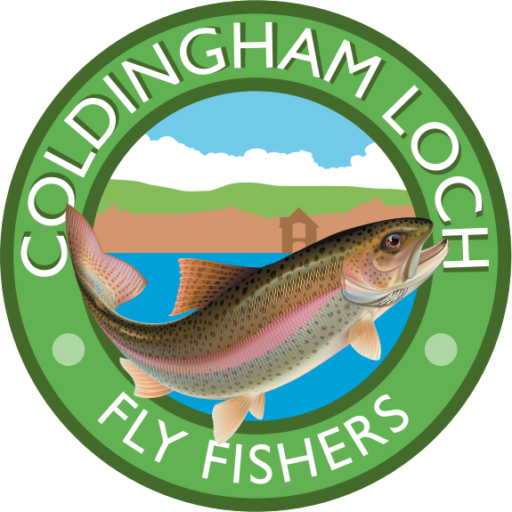

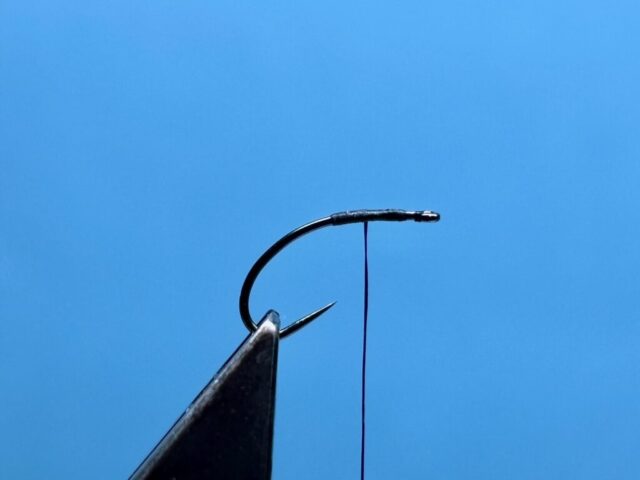
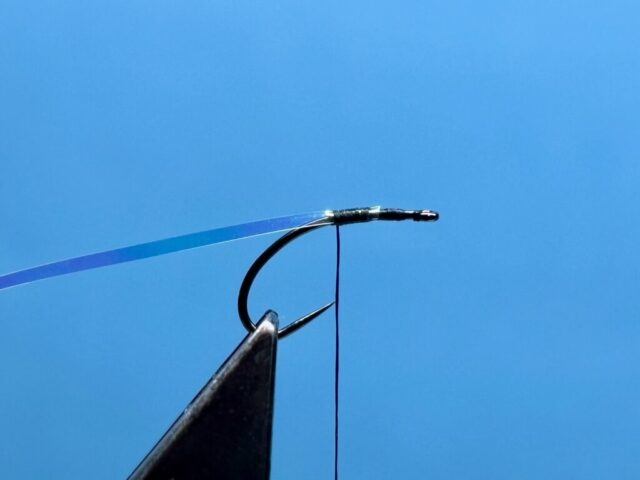
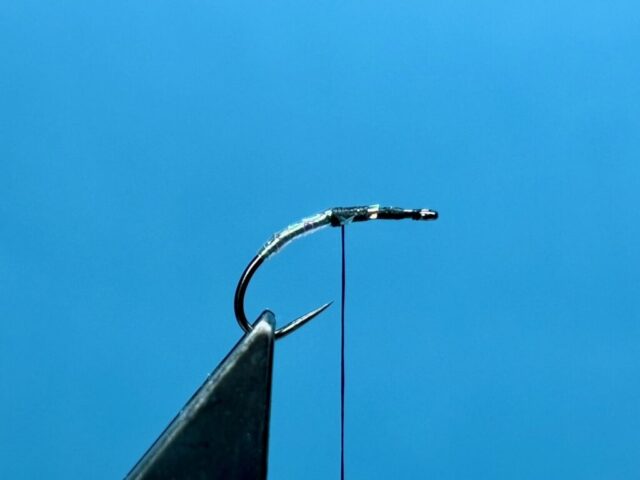
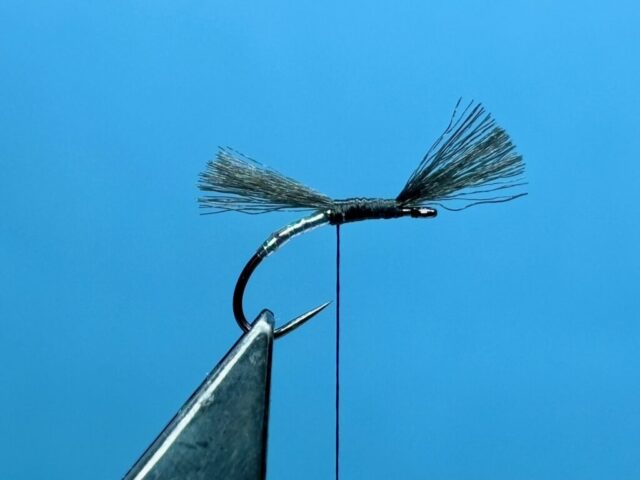
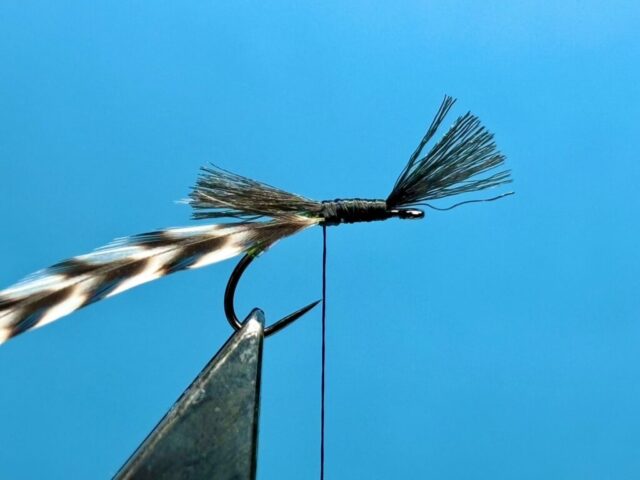
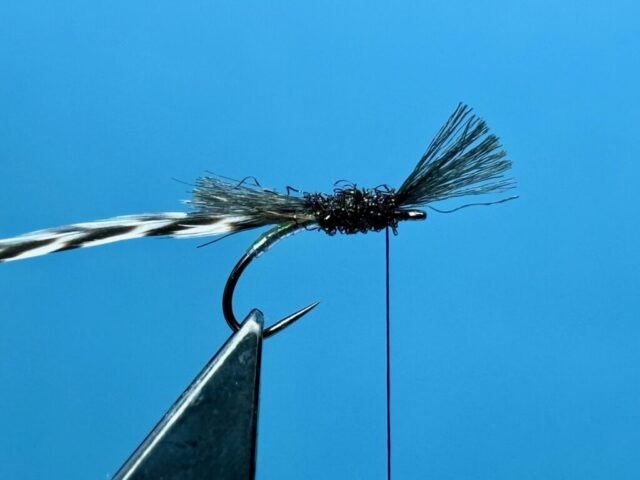
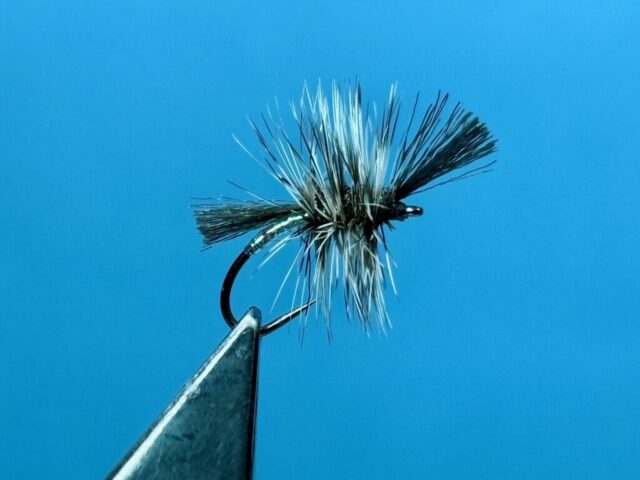
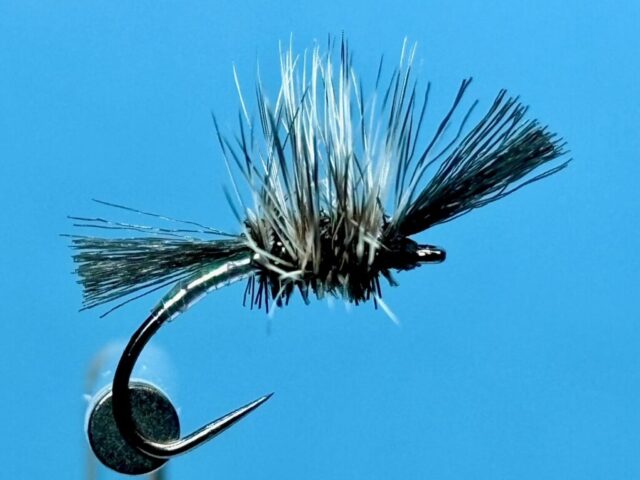

Recent Comments